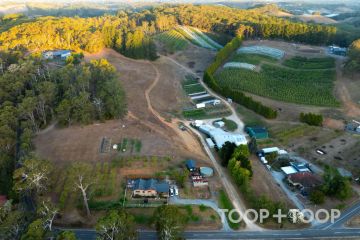After you have sold your house

Think you know how the property sale process works in Australia once a price has been agreed? Probably not, since the process and required steps vary greatly across Australia, as each state and territory has its own requirements.
We’ve put together a basic overview of what happens when buying or selling real estate in Australia, and look at just some of the many differences you could encounter when buying or selling property across the country.
Buyer’s deposit
At some point after the price is agreed, the buyer will have to pay a deposit in order to take the property off the open market. This tends to be 10 per cent of the purchase price, although in some cases this can be negotiated.
Generally speaking, the deposit is usually paid once a sale price has been agreed, enabling things to progress to the next step in the process.
The cooling-off period
Buyers and sometimes sellers are typically afforded what’s known as a cooling-off period. This fixed period (generally of between two and five working days) can be used by the buyer to complete any searches and inspections of the property and allows both parties time to confirm they are happy with the agreed sale price.
The length of this period, whether it applies to both parties or just the buyer, whether its duration can be negotiated between the parties, and penalties for terminating the agreement during the cooling-off period, are all dependent on the laws of the state or territory where the property is located.
Once the cooling-off period has ended without objection from either party, the contract is declared ‘unconditional’ (meaning locked in) and the full settlement process begins.
According to the WA Department of Commerce, “the law in Western Australia does not require that contracts for the purchase of property contain a cooling-off period”.
Settlement period
The settlement period is when both parties undertake to complete the property transaction. This is the time when solicitors or conveyancers for both parties do the bulk of their work, ensuring the buyers are purchasing exactly what they have been sold (inclusions and exclusions, conditions, zoning, planning permissions, boundaries and so on) and the monies owed are received by the seller.
At the end of this period, the legal transfer of the property from seller to buyer is done and the relevant stamp duty is calculated. Stamp duty rates, exemptions and discounts are set by state and territory governments.
Did you know…?
Check out these interesting facts you may not know about buying or selling real estate across the country.
- Where you are buying will determine when the buyer’s mortgage details are provided. It may not be needed until during settlement, or it could be that buyers can’t submit an offer without first having mortgage approval.
- If you buy at auction there is no cooling-off period so ensure you arrange finance prior to making an offer.
- As Rosemary Cotton, national secretary of the Australian Institute of Conveyancers, explains: “Conveyancers are not able to obtain a licence or be registered in Queensland and the ACT; law firms must conduct a property transaction.”
- The length of the settlement period is completely negotiable but is most often around 30 days in Queensland, whereas it is generally fixed at six weeks (though still can be agreed between the parties) elsewhere in Australia.
- Tasmania and WA have an optional 48-hour clause which, according to REIWA, “is normally inserted when the buyer wants to make an offer that is conditional upon the buyer selling their own property. That is, if the buyer does not sell their house, then the buyer will not be obligated to buy the seller’s house”.
- Offers to buy can usually be made verbally. However, in the Northern Territory, offers are submitted in writing using a formal contract document.
- First-home buyer grants: These are offered by state and territory governments, and the amounts and eligibility requirements vary significantly. In NSW, for example, grants are only offered to buyers of new homes.
Don’t be fooled into thinking the property sale process is the same everywhere. Each state and territory has its own quirks and rules governing the sale process. So whether you’re a seasoned buyer, first-timer or foreign buyer looking to enter the Aussie market, be sure to do your research first.
We recommend
States
Capital Cities
Capital Cities - Rentals
Popular Areas
Allhomes
More







